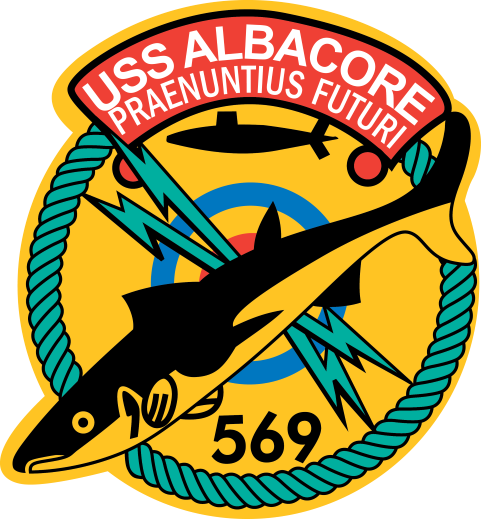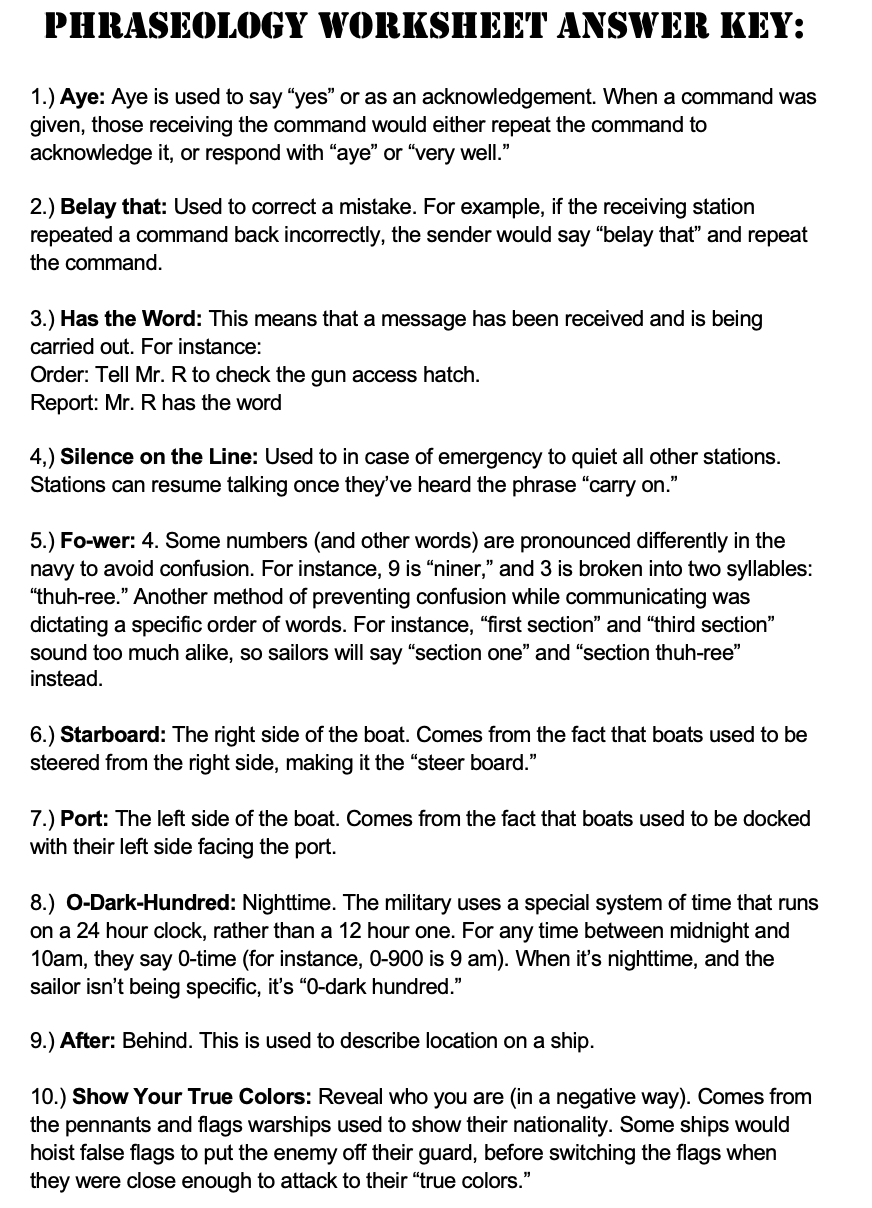Speaking like a Sailor: Naval Phraseology
Grades: 3-8
Connection to Curriculum Framework:
Massachusetts
- 7.MS-ETS3-2(MA). Compare the benefits and drawbacks of different communication systems.
- Includes developments in science, technology, and mathematics
New Hampshire
- Theme J: Human Expression and Communication
- Goals:
- Popular culture
- Language development
- Essential Questions:
- What is the role of popular culture in society?
- Goals:
Time Frame:
20-30 minutes (5-10 min introduction, 10 min activity, 5-10 min follow-up)
Objectives:
Students will learn about naval phraseology. In doing so, they will consider the importance of effective communication, the impact of a time period and historical context on communication, and the relationship between a group of people and methods of communication.
Setup:
There is no special setup for this activity. Students will work together in groups, and can do so by moving desks together etc. To social distance, make smaller groups and have the students sit across from each other, leaving six feet of distance.
Introduction and Diagnostic Assessment:
- Ask the students if they know what the terms “slang” or “jargon” mean.
- If a student volunteers with a definition, ask other students to join in with examples.
- If not, follow up by asking them to define examples you come up with. For example, “who knows what it means to ‘hit the hay?’” Other examples the students might recognize would be: all ears, jump to conclusions, beat around the bush, keep your chin up, pull someone’s leg, bite off more than you can chew, raining cats and dogs, under the weather etc.
- Once the students have heard examples, ask them how they think idioms come to be.
- Answers you might get (or prompt if you don’t get) could be from pop culture (jumping the shark etc.) or developed among small groups (like those aboard a submarine!)
- Explain that the navy has its own set of idioms, which they will know try to decipher!
Formative Assessment and Procedure:
- Break students into small groups.
- Distribute a phraseology worksheet to each group
- Ask the students to try to guess what each naval phrase on the worksheet means
- Walk around the room, checking in with students and asking them why they guessed the meanings they put down, how they are thinking about each phrase, etc.
- After 10 minutes, call the groups back.
- Go down the list, asking for guesses as to what each phrase meant.
- Tell them the correct answers, and explain how the phrases came to be.
- For an element of competition, record which group got the most right and declare them the winners!
Summative Assessment and Follow-up:
- Ask the students to share their favorite phrases they learned
- Why do they think groups of people come up with special phrases and terms?
- Some phrases, such as “aye” and “belay that” were developed to make sure that there were no misunderstandings. Why would clear communication be so important on a submarine? What could some consequences of a miscommunication be?
- How could specialty phrases be used to understand a group of people (what’s important to them, how they interact, etc.)?
- Why is it important for historians to understand phraseology? Is it important for us to understand modern phraseology as well?


